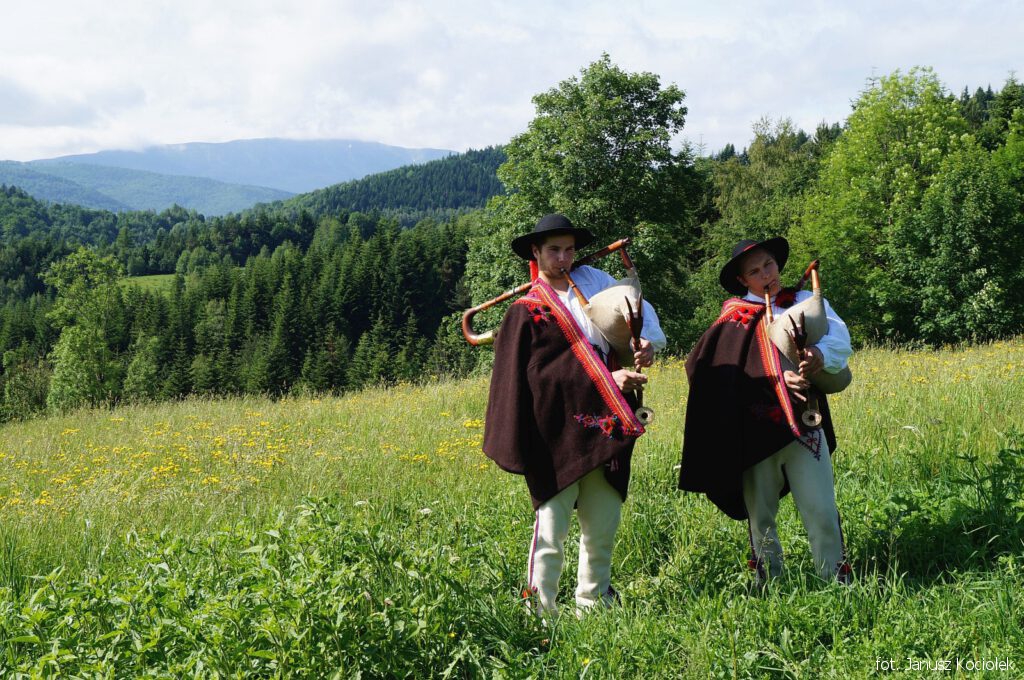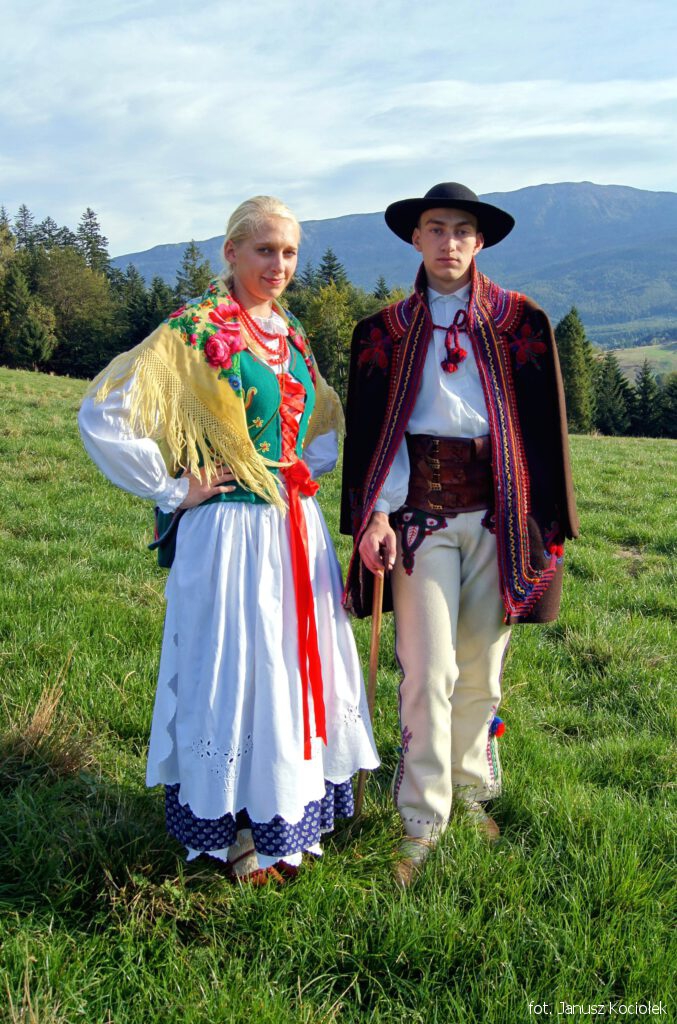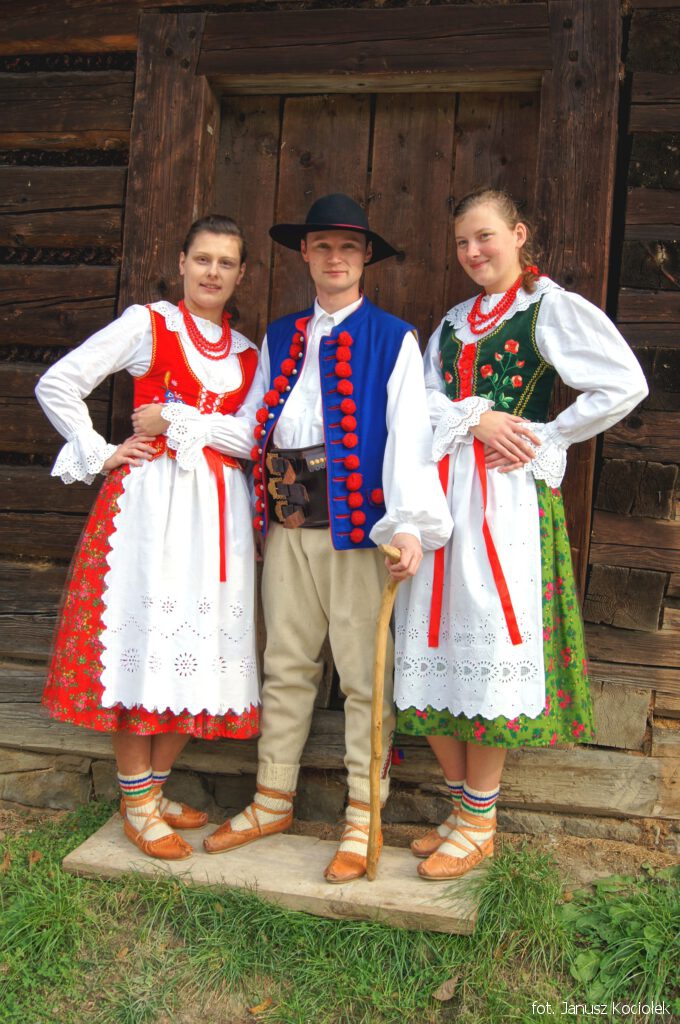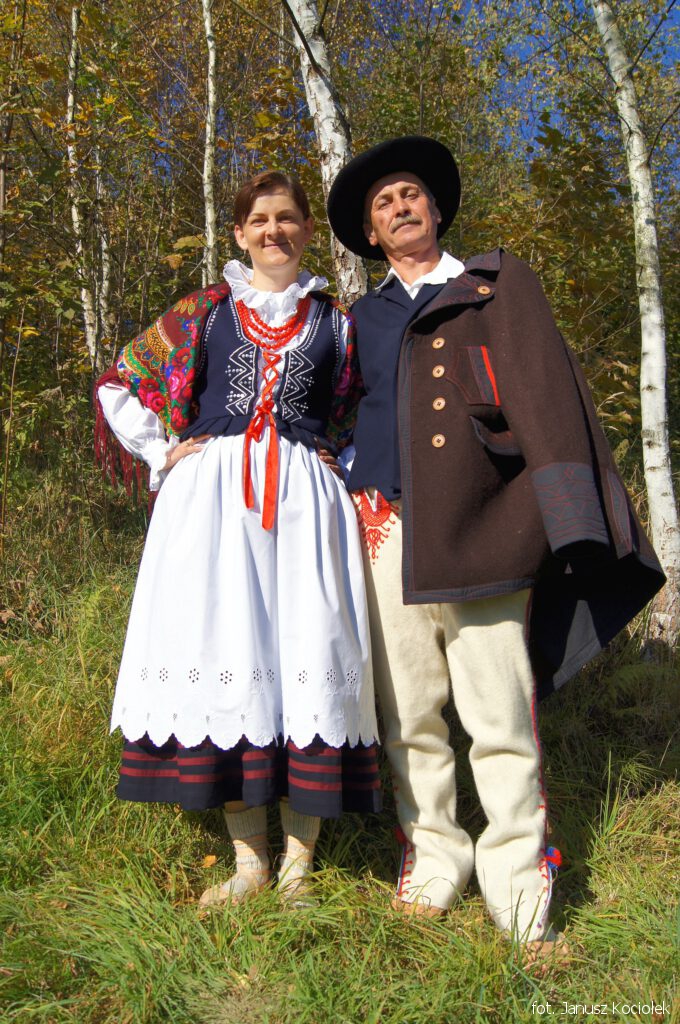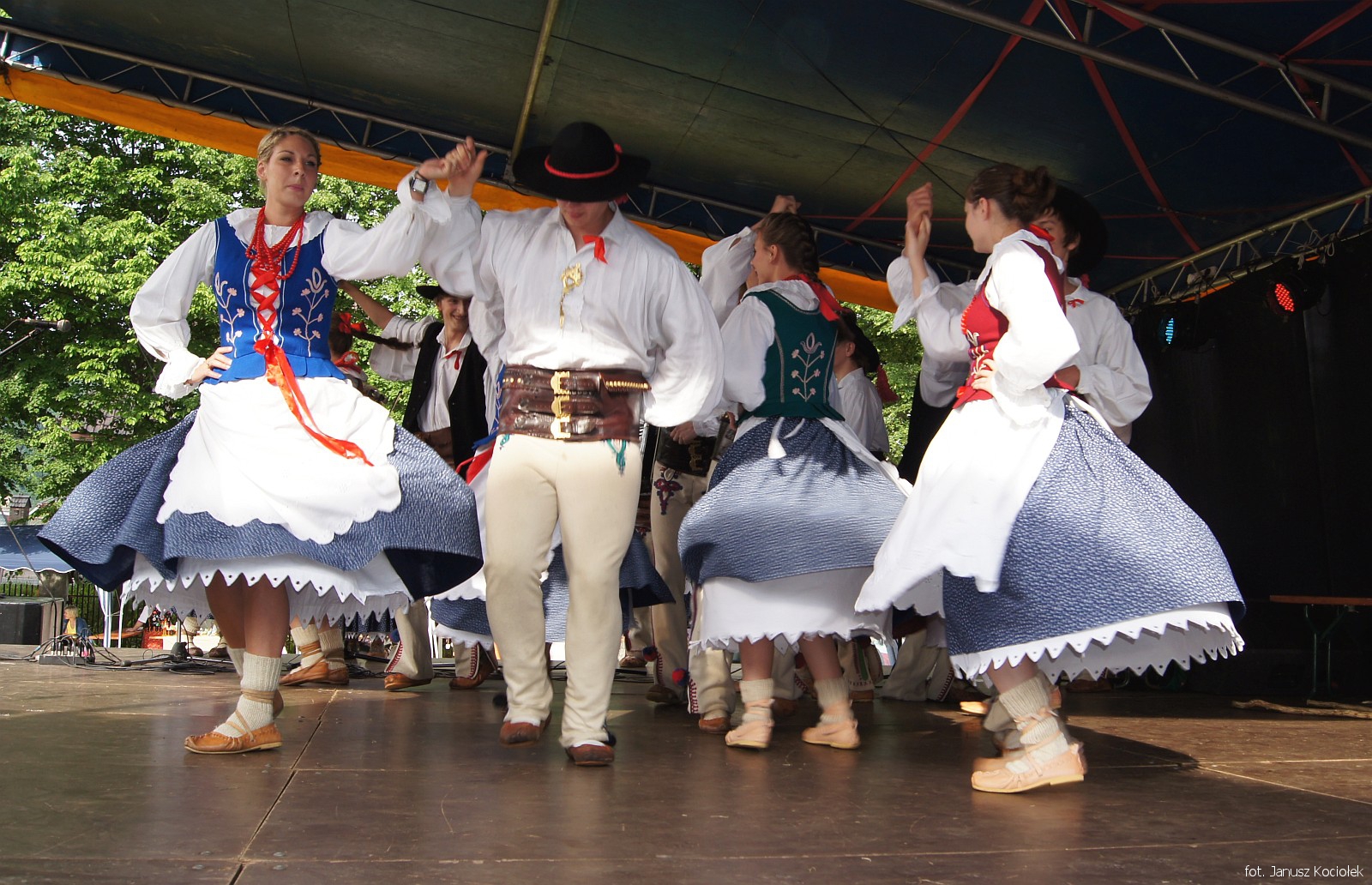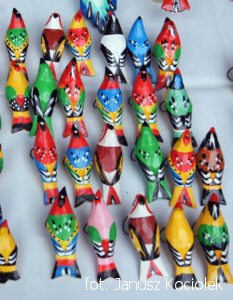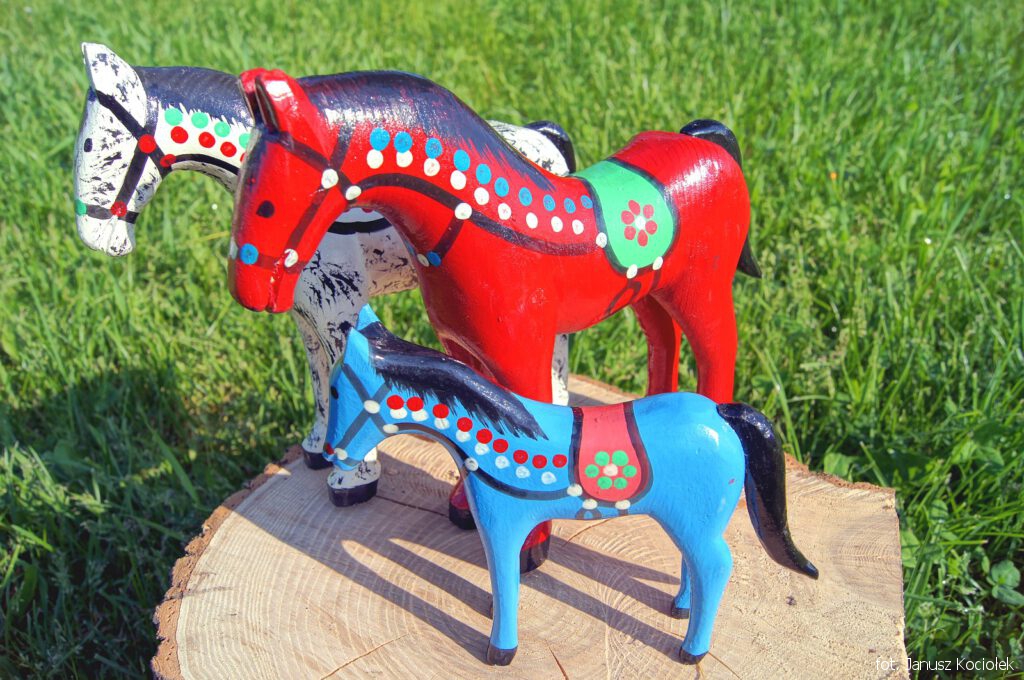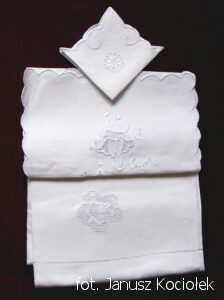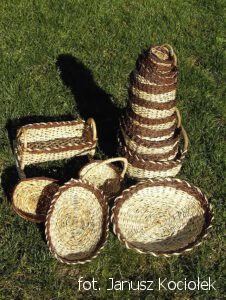Colourful folklore
Visitors to Podbabiogórze can get to know the rich cultural heritage of the region. Historically and ethnographically, there are three highland groups living here. The most numerous are the Babia Góra Highlanders occupying the southern part of the Sucha County. As early as in the mid-19th century, Wincenty Pol, a poet, geographer, and explorer of the Carpathian Mountains, wrote about the ‘Babiogórcy or Highlanders from Babia Góra, Jordanów and Sucha’ as a separate ethnographic group.
The western edge of the county is home to the Żywiec Highlanders and the north-eastern and eastern part to the Kliszczacy. The colourful folklore of these groups, created over the years, is alive today thanks to folk ensembles, bands, farmers’ wives’ associations and societies nurturing local traditions.
Ukształtowany przez lata folklor muzyczny i taneczny Podbabiogórza wpisuje się w ogólny zasób kulturowy polskiej góralszczyzny i z tego zasobu czerpie. Największy wpływ na jego charakter miała migracja wołoska, wnosząca m.in. elementy folkloru bałkańskiego, węgierskiego, rusińskiego, którymi na trasie swojej karpackiej wędrówki obrosła. Pod Babią Górą doszło do fuzji tej pasterskiej kultury z kulturą rolniczą, która dotarła tu wraz z osadnictwem z północy.
The music and dance folklore of the Podbabiogórze, formed over the years, is part of the general cultural heritage of the Polish highland culture and draws from it. The greatest impact on its character had the Wallachian migration, bringing in elements of Balkan, Hungarian, Ruthenian folklore, which grew on the route of its Carpathian migration. At Babia Góra, this pastoral culture merged with the agricultural culture, which arrived here together with the settlement from the north.
Among the oldest songs and folk-songs performed today, those with a pastoral theme predominate. The songs most often have a dance character. The dance was accompanied by music, i.e. a band, which originally consisted of bagpipes and violin.
In the verbal, musical and dance folklore of the Podbabiogórze there are also many references to the tradition of brigands. Songs feature, among others, the most famous Podbabiogórze bandit, Józef Baczyński from Skawica, executed in Cracow in 1735.
Local folklore and traditions, which are still vivid near Babia Góra, can be experienced during various competitions, festivals and fairs organised here. The largest cyclical folklore events in the Sucha County are: Babiogórskie Podłazy – a review of carol singing groups, the Powiatowy Konkurs Gawędziarzy, Śpiewaków i Instrumentalistów Ludowych – Babiogórskie Posiady (County Competition of Storytellers, Singers and Folk Instrumentalists – Babiogórskie Posiady), Święto Zabawki Ludowej (Folk Toy Festival), Tydzień Kultury Beskidzkiej (Beskid Culture Week), Powiatowe Dożynki (County Harvest Festival), Babiogórska Jesień (Babia Góra Autumn). During the year, the individual communes of the county also invite to their own festivals and numerous cultural and sporting events.
Traditional handicrafts and artistic crafts
It is from Podbabiogórze that wooden toys – well-known and recognisable not only in Poland – originate. Colourful birds and horses began to be made here in the mid-19th century, when the oldest and at the same time one of the most recognised centres of traditional toy-making in Poland, now known as the Stryszawa centre, was established.
Over the decades, many toy designs have been created here. Today, the most popular are birds of all kinds and sizes, horses on stands with wheels, ponies, carrousels with horses and so-called klepoki – birds on wheels.
Today, wooden, painted birds are the most recognisable toy and, at the same time, a brand product of Stryszawa. In 2011, the Beskid Wooden Toy Centre was opened here with a permanent toy-making exhibition and a toy sales outlet, and in 2017 the ‘Toymaker’s House’ was reconstructed.
Handicrafts such as embroidery are a permanent part of the region’s cultural heritage. Its traditions go back centuries, and embroidery handicraft flourished especially at the end of the 19th century, when the National Embroidery School was opened in Maków. The locally known products became more widely known at that time, also abroad. The white embroidery characteristic of the Maków school is dominated by small plant motives, consisting mainly of various kinds of circular flowers and twigs with oval leaves.
Another example of local manufacturing is wickerwork. Nowadays, various utilitarian or souvenir products are made from bark, and less frequently from wicker.
The work of craftsmen from Białka has also been known for years. The chess sets produced here in numerous designs are widely known both in Poland and abroad.
Many villages in the Podbabiogórze cultivate tissue paper traditions and make flowers of various sizes, single flowers, bouquets and various floral compositions out of colourful tissue paper. Each of these handicrafts can be not only an interesting souvenir of your stay at Babia Góra, but also an original gift for various occasions.
